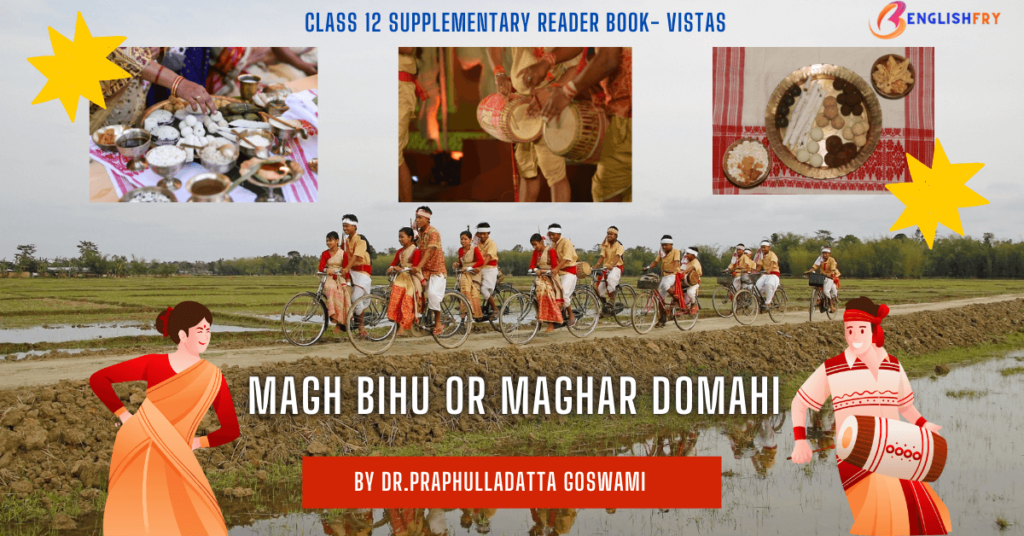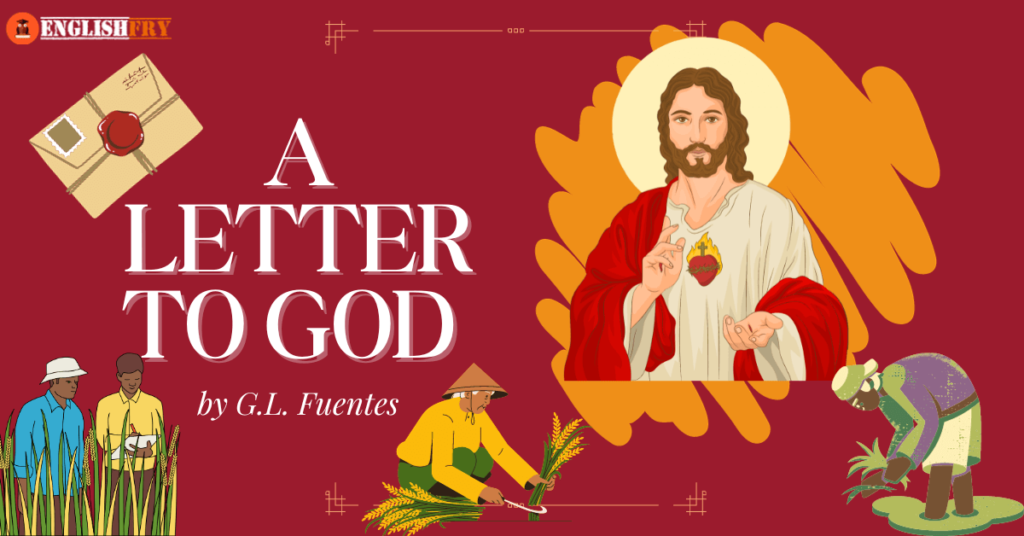Table of Contents
ToggleMagh Bihu or Maghar Domahi -Short Questions
Here you get Magh Bihu or Maghar Domahi question answer class 12 AHSEC Assam Board in English. Also previous year paper notes along with Textual and Important, extra short questions NCERT solutions.
- In which month Magh Bihu is celebrated?
Ans: Magh Bihu is celebrated in the month of Magh (January).
- What is the other name of Magh Bihu?
Ans: The other name of Magh Bihu is – Bhogali Bihu.
- What is the night before Magh Bihu is called?
Ans: The night before Magh Bihu is called – Uruka.
- What do the temple-shaped structures call?
Ans: The temple-shaped structures call as Meji.
- What do the hut-like structures call?
Ans: The hut-like structures call as Bhelaghar.
- In which month Kati Bihu is celebrated?
Ans: Kati Bihu is celebrated in the month of October.
- What is the other name of Kati Bihu?
Ans: The other name of Kati Bihu is – Kongali Bihu.
- Which tree is planted during Kati Bihu?
Ans: Tulsi plant is planted during Kati Bihu.
- Which bihu is closely associated with a fire ceremony?
Ans:- A fire ceremony is closely associated with Magh Bihu.
- In which part of Assam does Magh Bihu have a stronger hold ?
Ans:-Magh Bihu, the post harvest winter festival seems to have a stronger hold on people oflower Assam, not excluding the tribals
Magh Bihu or Maghar Domahi Question and Answers
1.What does the term Domahi means? What do people usually have for lunch on that day?
Ans: The word Domahi means the junction of two months.
On the ‘Domahi’ or ‘Sankranti’ people do not take the usual rice and curry for their lunch instead they take various food items like chira, pitha, laru, curd and so on.
2.How is the delicacy ‘Sunga-pitha’ prepared?
Ans: ‘Sunga-pitha’ is a type of pitha which is made from moist rice powder put in a green bamboo tube and roasted in the fire. The ingredient mixed with the powder used to be salt but now-a-days some people prefer a sweet variety.
In upper Assam, the people make ‘Sunga-saul'(another name of sunga pitha) which is made from the sticky bora rice steamed in a bamboo tube. When it is done, the sticky roll is made into pieces and eaten mixed with milk and gur.
3.Give an elaborate account of the celebration associated with Uruka, The important part of Magh Bihu?
OR
The Uruka happens to be an important aspect of Magh Bihu. Give an elaborate account of the celebrations associated with Uruka.
Ans: Magh Bihu is one of the most important festivals of Assam. It is the post-harvest winter festival celebrated by the Assamese people in the month of Magh. Magh Bihu is also known as ‘Bhogali Bihu’ or the Bihu of Enjoyment.
Uruka or the Bihu eve happens to be an important aspect of Magh Bihu. The womenfolk prepare various food items viz. ‘ chira’, ‘pitha’, ‘laru’, ‘curd’ and so on for the next day. The Uruka is not a one-day affair as fuel, fish and meat are to be collected. In tribal societies, tribal women indulge in brewing rice beer, usually undistilled, which takes four to five days to get matured during winter.Best restaurants near me
The young boys build a temple-like structure in a field called ‘meji’ with green bamboo, dried banana leaves, and hay. Moreover, a hut-like structure known as ‘bhelaghar’ is also constructed. The cowherds sometimes pass the night in Bhelaghar warming themselves by a fire. They also feast on the vegetable stolen from the villager’s garden and the eatables given to them.
This Uruka festival can be celebrated as a family affair or communal.
4.People do not take the usual rice and curry on the Domahi or Samkranti day for their lunch. What are the different kinds of food items that people have for lunch on this particular day?
Ans: On ‘Domahi’ or ‘Sankranti’ people take various food items like chira, pitha, laru, curd and so on. A special preparation is ‘mah-kara'(mah-mare)- a combination of roasted rice, blackgram, sesame, and pieces of ginger. Another preparation is ‘tekeli-pitha’ which is like idle but larger. It is salted rice powder steamed on the mouth of a small pitcher or a kettle. ‘Sunga-pitha’ is another food item which is moist rice powder put in a green bamboo tube and roasted in the fire. Earlier salt was the only ingredient mixed with the rice powder but at present. Some people prefer sweet variety.
In the upper Assam ‘Sunga-saul’ is a popular food item among the people. It is the sticky bora rice steamed in a bamboo tube. When cooked, the sticky roll is made into pieces and eaten with milk and gur. Fried pitha is another preferable food item for the people of upper Assam. The most important thing is that meat is not allowed on the Domahi or Samkranti day.
5.Although the Kacharis, the most numerous tribe of Assam, have similar customs like the Magh Bihu, they differ in certain features. Describe the manner in which the Kacharis celebrate their festival during the time of Assamese Magh Bihu.
Ans: Tribes of Assam are often recognized as the first inhabitants of the land who belong to various tribal groups. Among them, the Kacharis are the most numerous tribe of Assam constituting a large part of the population of Assam. The Kacharis follow similar customs during the time of Assamese Magh Bihu but these customs differ in certain features like other Assamese people, the Kacharis also tie cords round fruit-bearing trees. They offer rice to birds, fishes, and land animals like dogs and pigs. Further, on the Domahi day, they put a mark of water mixed with cow-dung around their granary. On the seventh day of the Magh Bihu i.e sixth Magh, the Kacharis again clean their utensils. Sacrifice fowl to Bathou, their god, and go out carol singing, collecting eatables. In their word, this custom is known as ‘magan’ or ‘begging’.
Another important feature is that Kacharis consider the construction of the Bhelaghars and setting fire to them to be the exclusive privilege of cowherd boys. The boys burn the Bhelaghars before dawn, before the crows come out of their nests. The leading cowherd accompanied by the other boys of the village, prays for the glory and prosperity of the village while setting fire to the Bhelaghar.
Thus the kacharis celebrate their festival of Magh Bihu in a manner different from the Assamese Magh Bihu in certain customs.
6.Briefly describe the custom of ‘magan’ or begging associated with the Kacharis.
Ans: The Kacharis, the most numerous tribe of Assam, follow similar customs during the time of Assamese Magh Bihu, but these customs differ in certain features. On the seventh day of Magh Bihu i,e. sixth Magh, they again clean their utensils, sacrifice fowls to Bathou, their god and go out caro singing, collecting eatables. This custom in their word is known as ‘magan’ or begging.
7.Describe the different kinds of sports and martial games associated with Magh Bihu. How did the young people in earlier times prepare themselves for participating in the martial arts?
Ans: One Prominent feature of Magh Bihu is the holding of different kinds of sports and martial games. Sports like wrestling, racing, jumping, buffalo fighting, egg fighting are associated with the Magh Bihu. In earlier times young people used to play martial games like swordplay and javelin throwing which was considered customary.
In earlier times, young people had to make special preparation for participating in the martial arts. From weeks ahead, they used to make camps on dry river banks and exercise themselves in this art. This preparation was done in order to make themselves ready to defend their land from aggressors.
8.Kati Bihu, according to the author, cannot be called a festival as such. How is Kati Bihu celebrated in Assam?
Ans: According to the author Dr. Praphulladatta Goswami, Kati Bihu, held in the autumn season is a festival of little significance. It has no public significance. The ritual associated with this Bihu is that in the family yard light is put at the foot of the Tulsi plant and women and children sing hymns in this manner:
“Tulasi, O Mother, Tulsi,
You are Govinda’s favourite,
Which way has Krishna gone,
Mother, tell us quickly.”
The Tulasi plant is considered to be the symbol of Vrinda, one of the devotees of Lord Krishna.
Another notable aspect of Kati Bihu is that the farmer takes certain steps for the protection of his crops. He plants a small bamboo in the field and lights an earthen lamp at its foot. He may also whirl a piece of bamboo and chant certain mantras with a view to protecting the maturing paddy from destructive pests. Moreover, some farmers lit up a special kind of lamp, Known as the ‘Akash banti’ or the sky lamp hanging from a tall bamboo. The Kacharis, the most numerous tribes of Assam put lamps at the foot of the siju cactus, a symbol of their chief god Bathou, in the garden, at the granary, and in the field.
As the Kati Bihu is not celebrated in a flamboyant manner like Bohag Bihu and Magh Bihu, the author says, ‘Kati Bihu cannot be called a festival as such’.
9.What is the importance of ‘Meji’ and ‘Bhelaghar’ built for Magh Bihu?
Ans: The ‘Meji’ and ‘Bhelaghar’ bear a great significance in Magh Bihu. The young boys build a temple-like structure called ‘meji’ in fields with green bamboo, dried banana leaves and hay. ‘Bhelaghar’, a hut-like structure constructed and the cowherds sometimes pass the night in a ‘bhelaghar’ warming themselves by a fire. They also feast on the vegetables stolen from the villagers’ garden and the eatables given to them.
10.Why does the author believe that the fire rituals associated with Magh Bihu have an Indo-Europen origin?
Ans: The author believes that the fire rituals associated with Magh Bihu have an Indo-European origin. In Magh Bihu, ‘meji’ is burnt and half-burnt bamboos are scattered in the fields or thrown near the fruit-bearing trees with a belief that the ashes and half-burnt bamboos increase the fertility of fields and gardens. Similarly, the Europeans who lighted Lantern and Midsummer fire also have belief in the efficacy of aches and embers as a means of fertility. Even some follow the custom of tying bands of straw round tree trunks to render them fruitful.
11.How can we assume the influence of Vaishnavism in the celebration of Magh Bihu?
Ans: In Magh Bihu, after the ‘meji’ and ‘Bhelaghar’ are burned, people hold a session of hymn-singing in the accompaniment of kettledrums and large cymbals. The holding of hymn-singing or ‘nam-prasanga’ is a noted feature of this month of Magh. In this aspect, one can assume the influence of Vaishnavism in the celebration of Magh Bihu.
Founder of Englishfry.com, a captivating and knowledge-driven blog & Founder of Android app/website Studyfunnel.com, an online Mock Test Series Portal. With a wealth of experience spanning over 16+ years, he has excelled as an Ex-Asst.Professor, Teacher, Amazon published author, Website Developer, Graphic Designer,Blogger,Poet, and Creative academic content writer publisher of 4 academic books available Online on Amazon & Flipkart. His tryst in Literature helped him realize his love for writing and telling stories. A tech-savvy language nerd by day and, a passionate writer by night, he now translates his experiences into tales of wisdom served with a side of humor.His widely recognized profound insights ,captivating writing style of weaving words make him contribute to prestigious publications and a sought-after authority in the field that transport readers to extraordinary worlds.








